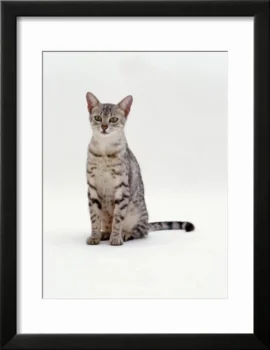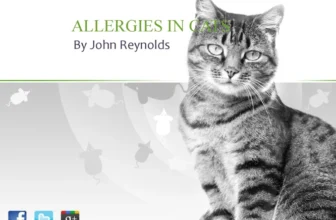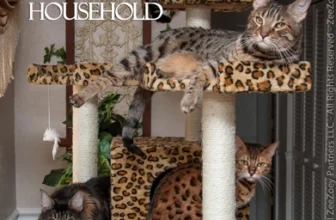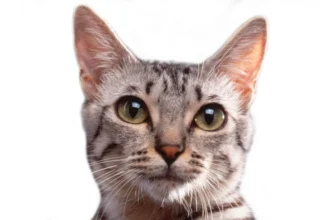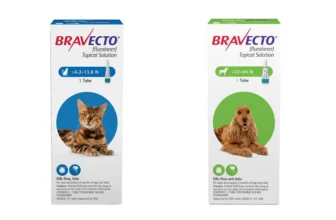As a California Spangled owner, you want to provide the best possible care for your furry companion. While you may be diligent in grooming and regular vet visits, you may not have considered the importance of dental cleanings. That’s right, dental cleanings aren’t just for humans – they’re a crucial component of your cat’s overall health. In this article, we’ll explore why dental cleanings are necessary for your California Spangled, how to prepare for a cleaning, what to expect during and after the cleaning, and other ways to promote good oral health. By the end of this article, you’ll have a better understanding of why dental cleanings are essential for your feline friend’s well-being. Let’s dive in!
The Importance of Oral Health

Maintaining good oral health is crucial for your California Spangled’s overall well-being. It is more than just having clean teeth and fresh breath. Poor oral hygiene can lead to serious health issues such as periodontal disease, tooth decay, and even organ damage. Regular dental cleanings and proper home care are essential to keep your cat’s teeth healthy and prevent dental diseases. In this section, we will delve deeper into the importance of oral health, what happens without regular dental cleanings, the benefits of regular cleanings, and other ways to promote dental wellness. Learn why a simple routine of regular dental checkups can make a big difference in your California Spangled’s life.
What Happens Without Regular Dental Cleanings
Neglecting your California Spangled’s oral health can have serious consequences. Without regular dental cleanings, your cat is at risk for a variety of dental issues, including plaque and tartar buildup, gum disease, and tooth decay. As these issues progress, your cat may experience pain and discomfort, leading to loss of appetite, difficulty eating or chewing, and even behavioral changes like aggression or avoidance.
Neglecting your cat’s dental health can also lead to more serious health issues beyond the mouth. Bacteria from dental problems can spread to other parts of the body, potentially causing kidney, liver, or heart disease. In extreme cases, untreated dental issues can even be life-threatening to your feline friend.
To prevent these issues, it is important to take your California Spangled for regular dental checkups. Additionally, at-home dental care, such as teeth brushing and using dental products specifically designed for cats, can also help promote good oral health. By committing to your cat’s dental wellness, you can ensure a long, happy, and healthy life for your furry companion.
The Benefits of Regular Dental Cleanings
Regular dental cleanings have numerous benefits for your California Spangled. Not only do they keep your cat’s teeth and gums healthy, but they can also prevent more serious dental issues from developing in the future. Here are some of the key benefits of regular dental cleanings:
- Preventing Tooth Decay: One of the major benefits of regular dental cleanings is that they can help prevent tooth decay in your California Spangled. Without regular cleanings, tartar and plaque can build up on your cat’s teeth, which can eventually lead to decay. Regular cleanings remove this buildup and help keep your cat’s teeth healthy.
- Preventing Gum Disease: Another key benefit of regular dental cleanings is that they can help prevent gum disease. Gum disease occurs when plaque and tartar buildup on the gum line, leading to inflammation and infection. Over time, gum disease can cause tooth loss and other serious dental problems. Regular dental cleanings help remove this buildup, reducing the risk of gum disease and keeping your cat’s gums healthy.
- Identifying Dental Problems Early: During a dental cleaning, your veterinarian will examine your California Spangled’s mouth and teeth for any signs of dental problems. If they identify any issues, they can begin treatment early, which can prevent the problem from becoming more serious. For example, if your cat has a cracked tooth, your veterinarian can identify it during a cleaning and begin treatment before it becomes infected or leads to other dental problems.
- Preventing Bad Breath: Regular dental cleanings can also help prevent bad breath in your California Spangled. Tartar buildup and other dental issues can cause bad breath in cats, but regular cleanings help keep their mouths clean and fresh-smelling.
Regular dental cleanings are an important part of maintaining your California Spangled’s dental wellness. Not only do they keep their teeth and gums healthy, but they can also identify and prevent more serious dental problems from developing. If you’re unsure about how often to schedule dental checkups for your cat or want to learn more about common dental diseases in California Spangled cats, check out our articles on California Spangled dental checkups and dental diseases, or talk to your veterinarian about your cat’s dental wellness needs.
Other Ways to Promote Oral Health
Maintaining good oral health for your California Spangled cat is essential for their overall well-being. Regular dental cleanings are important, but there are other ways to promote oral health as well. Here are some tips to keep your cat’s teeth and gums healthy:
- Brush their teeth regularly: Just like humans, cats can benefit from regular brushing. Purchase a toothbrush and toothpaste specifically designed for cats. It’s important to start slow and gradually get them used to the sensation.
- Provide dental chews and toys: Chewing on certain toys and treats can help clean your cat’s teeth and gums. Look for products that are specifically designed to promote oral health.
- Offer wet food: Wet food can help keep your cat’s mouth moist and reduce the buildup of tartar and plaque on their teeth.
- Monitor their diet: Just like humans, a cat’s diet can have an impact on their oral health. Limit their intake of sugary treats and consider a diet that is specifically formulated to promote oral health.
- Regular check-ups: It’s important to schedule regular check-ups with your veterinarian to ensure that your cat’s teeth and gums are healthy.
By incorporating these practices into your cat’s daily routine, you can help maintain optimal oral health. Remember, prevention is key when it comes to dental health. Don’t wait until your cat has a problem; start promoting dental wellness today. For more information on dental wellness for California Spangled cats, check out our guide to dental wellness.
Preparing for a Dental Cleaning
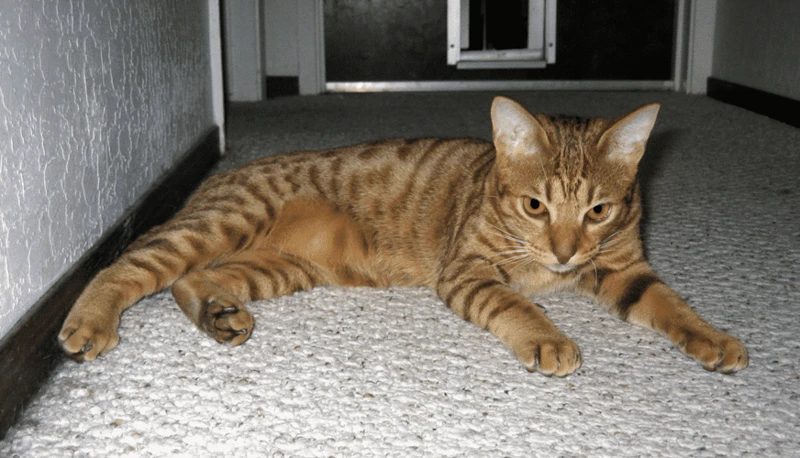
Getting ready for your cat’s dental cleaning is an important step in maintaining their oral health. It’s understandable to feel a bit perplexed about preparing for the cleaning, but don’t worry, it’s a simple process that can help your feline friend lead a healthy and happy life. In this section, we’ll discuss the steps you need to take to prepare for your cat’s dental cleaning, including when to schedule the cleaning and how to get your kitty ready for the procedure. Let’s dive in and explore the process together.
When to Schedule a Cleaning
Regular dental cleanings are essential for maintaining your California Spangled’s oral health. While it may seem like an unnecessary expense, the cost of skipping a dental cleaning can be far greater, both in terms of finances and your cat’s health. But when should you schedule a cleaning for your furry friend? Here is a helpful table outlining guidelines for scheduling dental cleanings for your California Spangled.
| Age of Cat | Cleaning Frequency | Notes |
|---|---|---|
| Prior to 1 year old | At least 1 cleaning | Important for establishing good oral health habits early on |
| 1-3 years old | 1 cleaning per year | Recommended frequency for cats in good health |
| 3-7 years old | 1 cleaning per year | Recommended frequency for cats in good health |
| 7+ years old | 2 cleanings per year | Important for detecting and addressing potential dental issues that may arise with age |
It’s important to note that these guidelines are for cats in good health. If your California Spangled has existing dental problems, they may require more frequent cleanings. Additionally, if you notice any changes in your cat’s chewing habits, bad breath, or other signs of oral discomfort, it’s important to schedule a cleaning as soon as possible, regardless of their age or previous cleaning schedule.
How to Prepare Your Cat for a Cleaning
Preparing your California Spangled for a dental cleaning can help reduce stress for both you and your cat. Here are some tips on how to prepare your cat for a cleaning:
| Step | Explanation |
|---|---|
| Step 1: | Introduce your cat to tooth brushing a few weeks in advance. This can help get them used to the sensation of having their mouth touched and make the cleaning process less stressful. |
| Step 2: | Handle your cat’s mouth gently and reward them with a treat afterward. This helps create a positive association with having their mouth touched. |
| Step 3: | Before the cleaning, avoid feeding your cat for 12 hours. This can help reduce the risk of nausea or vomiting during the cleaning process. |
| Step 4: | Take your cat to the vet’s office in a carrier. This helps reduce stress and anxiety during transportation. |
| Step 5: | Inform the vet if your cat has any previous health issues or has had a negative experience with dental cleanings in the past. This can help the vet tailor their approach to your cat’s needs. |
By taking these steps to prepare your California Spangled for a dental cleaning, you can help make the process more comfortable and less stressful for your cat. This can ultimately lead to a more successful cleaning and better oral health for your furry friend.
During the Dental Cleaning
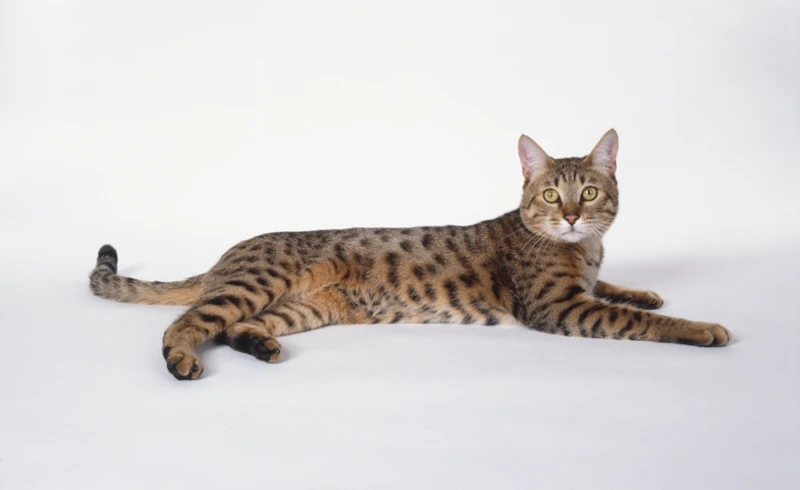
As the dental cleaning begins, your California Spangled may feel uneasy or anxious. However, it’s important to remember that a dental cleaning is a necessary step in maintaining your cat’s oral health. During this process, your vet will carefully examine and clean your cat’s teeth, ensuring that any potential issues are addressed before they become more serious. Here’s a closer look at what you can expect during your cat’s dental cleaning.
What to Expect
During a dental cleaning for your California Spangled, you can expect a thorough examination of your cat’s oral health. Here are some of the things you can expect during a dental cleaning for your beloved feline friend:
1. Anesthesia: Before the cleaning begins, your veterinarian will administer anesthesia to your cat. Anesthesia is necessary to keep your cat calm and still during the dental cleaning process. Your veterinarian will monitor your cat’s vital signs during the entire cleaning process to ensure their safety.
2. Scaling: Once your cat is under anesthesia, the dental hygienist will begin scaling the teeth. Scaling involves removing the plaque and tartar build-up on your cat’s teeth, both above and below the gum line. This is an important step to prevent periodontal disease and keep your cat’s teeth healthy.
3. Polishing: After scaling, the hygienist will polish your cat’s teeth. Polishing helps to smooth out any rough spots on the tooth’s surface, making it more difficult for plaque and tartar to build up.
4. Dental Radiographs: In some cases, your veterinarian may take dental radiographs (x-rays) of your cat’s mouth. Dental radiographs can reveal tooth decay or disease that may be hidden beneath the gum line.
5. Extractions: If your cat has severe dental disease, their veterinarian may recommend removing one or more teeth. This is done only after discussing all options and with your approval.
6. Gentle Recovery: Once the cleaning is complete, the anesthesia will be turned off and your cat will begin to wake up. You’ll be allowed to take your pet home after they’ve recovered sufficiently from the anesthesia.
It’s important to remember that every cat is different and that the dental cleaning process may vary depending on your California Spangled’s individual dental needs. However, by getting a dental cleaning, you’re helping to ensure that your fur baby has a healthy and happy life.
Potential Dental Issues
When your California Spangled receives a dental cleaning, the veterinarian will not only clean their teeth, but also check for any potential dental issues that may develop or have already developed. It’s essential to catch dental issues early to prevent them from developing into more serious health problems. Some potential dental issues that your cat may experience include:
- Tooth decay: This occurs when bacteria in the mouth form plaque and tartar build-up on the teeth, leading to the erosion of tooth enamel. Without treatment, tooth decay can lead to pain, infection, and even tooth loss.
- Gingivitis: This is an inflammation of the gums caused by bacterial infections in the mouth. Signs of gingivitis include swollen, red, and bleeding gums. When left untreated, gingivitis can progress to more severe gum disease.
- Gum disease: Also known as periodontitis, gum disease is a more severe gum infection that can result in tooth loss and other serious health problems if left untreated.
- Oral tumors: These can develop in the mouth and require immediate veterinary attention for diagnosis and treatment.
- Broken teeth: These can occur from trauma or chewing on hard objects and can cause pain and infection if left untreated.
It’s important to note that many of these dental issues can be prevented or treated with regular dental cleanings and proper at-home dental hygiene. If you notice any signs of dental problems in your California Spangled, such as bad breath, swollen gums, loose teeth, or reluctance to eat, it’s essential to schedule a veterinary visit for an evaluation and treatment. By staying on top of your cat’s oral health, you can help ensure their overall health and well-being.
Treatment Options
During a dental cleaning for your California Spangled, it’s possible that certain dental issues may be discovered. If this happens, there are a variety of treatment options available to address them. Here are some of the most common treatment options for dental issues in cats:
- Extraction: If a tooth is severely damaged or diseased, extraction may be necessary. The veterinarian will remove the affected tooth under anesthesia.
- Fillings: Just like with humans, cats can get cavities. If a cavity is discovered during a dental cleaning, the veterinarian may recommend a filling. This involves removing the decayed material from the affected tooth and filling the cavity with a material like amalgam or composite resin.
- Root canal: If a tooth is infected but not severely damaged, a root canal may be recommended. This involves removing the damaged or infected part of the tooth and filling the root canal with a material like gutta-percha to prevent bacteria from recolonizing the area.
- Periodontal treatment: If your cat has gum disease or other periodontal issues, the veterinarian may recommend a deeper cleaning that goes below the gumline to remove bacteria and calculus. In severe cases, surgery may be necessary to remove diseased tissue and promote healing.
It’s important to note that while some of these treatments may sound daunting, they are all necessary to ensure your California Spangled’s overall health and well-being. It’s also important to follow your veterinarian’s recommendations for follow-up care and maintenance to prevent future dental issues.
After the Dental Cleaning
As your California Spangled cat emerges from their dental cleaning, you may be wondering what you should do next. Post-cleaning care is essential to ensure that your cat’s mouth stays healthy and free of disease. The steps you take after the dental cleaning can make all the difference in maintaining good oral hygiene for your feline friend. Let’s explore some practical tips to help your cat recover smoothly and maintain good oral health at home.
Post-Cleaning Care
After your California Spangled’s dental cleaning, it’s important to follow some post-cleaning care guidelines to ensure their mouth stays healthy and clean. Here are some tips for post-cleaning care:
| Offer Soft Foods: | After the cleaning, your cat’s gums may be sensitive, so offer them soft foods to eat for a few days. Wet cat food or softened dry food are good options. Avoid hard treats or bones that could irritate the gums. |
| Observe Their Behavior: | Watch your cat’s behavior to ensure they are recovering well from the cleaning. If they seem unusually lethargic or have trouble eating or drinking, contact your veterinarian. |
| Provide Water: | Make sure your cat has access to fresh water at all times. Drinking water can help rinse away any remaining debris in their mouth. |
| Keep Up with Regular Brushing: | To maintain your cat’s oral health, it’s important to continue brushing their teeth regularly. Aim for at least once a week, but ideally every day. Use a cat-specific toothbrush and toothpaste. |
By following these post-cleaning care tips, you can help ensure your California Spangled’s mouth stays healthy and clean. If you have any concerns or notice any issues, don’t hesitate to contact your veterinarian for further guidance.
Maintaining Good Oral Health at Home
Maintaining good oral health at home is crucial for keeping your California Spangled’s teeth and gums healthy between dental cleanings. Here are some tips to help you keep your cat’s mouth healthy:
| Tips for Maintaining Good Oral Health at Home |
|---|
| Brush your cat’s teeth regularly: Brush your cat’s teeth with a soft-bristled toothbrush and vet-approved toothpaste at least once a week. If your cat is not used to brushing, start slowly and gradually increase the frequency. When brushing, focus on the outside surfaces of the back teeth where tartar tends to accumulate. |
| Offer dental treats: Dental treats can be a helpful addition to your cat’s oral care routine. Look for treats that are specifically designed to promote dental health in cats. These treats usually contain enzymes that help to break down plaque and tartar. |
| Provide chew toys: Chew toys can also be helpful in promoting oral health in cats. Look for toys that are designed to clean teeth and massage gums. Avoid toys that are too hard or small, as they can be dangerous for your cat. |
| Feed a healthy diet: A healthy diet can also play a role in promoting good oral health in cats. Make sure your cat is eating a balanced diet that includes high-quality protein and is free from excessive carbohydrates and sugars. |
| Take your cat for regular dental check-ups: Regular veterinary check-ups can help to catch dental issues early, before they become more serious. Talk to your vet about the best schedule for your cat’s check-ups based on their individual needs. |
By following these tips, you can help to promote good oral health in your California Spangled and keep their teeth and gums healthy and happy. Remember, good oral health is an important part of your cat’s overall health and well-being!
Conclusion
In conclusion, it’s clear that regular dental cleanings are essential for the oral health of your California Spangled feline friend. Neglecting their dental hygiene can lead to serious health problems and discomfort for your pet. It’s important to remember that dental cleanings are not only necessary but also beneficial for your cat.
By maintaining regular dental cleanings, you can prevent the buildup of tartar, plaque, and bacteria that can cause gingivitis, periodontal disease, and tooth decay. This not only improves your cat’s overall oral health but also their overall health and well-being.
In addition to regular dental cleanings, there are also other ways to promote good oral health for your cat, such as feeding them a healthy diet, providing them with chew toys, and brushing their teeth regularly at home.
It’s important to schedule dental cleanings at the appropriate time and to prepare your cat properly, to ensure that the cleaning is effective and safe. During the cleaning, it’s important to pay attention to any potential dental issues and discuss possible treatment options with your veterinarian.
After the cleaning, it’s crucial to follow post-cleaning care guidelines and to maintain good oral health at home to ensure that the benefits of the cleaning are long-lasting.
In summary, regular dental cleanings, along with proper home care, can help ensure the long-term health and happiness of your beloved California Spangled cat. Don’t neglect their dental hygiene – prioritize it for their sake and yours.
Frequently Asked Questions
What is a dental cleaning for cats?
A dental cleaning for cats is a professional cleaning of your cat’s teeth performed by a veterinarian. It involves scaling, polishing, and examining your cat’s teeth and gums to keep their oral health in check.
Why are dental cleanings necessary for my California Spangled?
Dental cleanings are necessary for your California Spangled because they help remove plaque and bacteria buildup, preventing serious dental problems in the future. They also help to improve your cat’s overall health and well-being.
How often should I schedule dental cleanings for my California Spangled?
You should schedule dental cleanings for your California Spangled at least once a year. However, your veterinarian may recommend more frequent cleanings depending on your cat’s oral health.
What are some signs that my California Spangled needs a dental cleaning?
Signs that your California Spangled needs a dental cleaning include bad breath, difficulty eating, swollen or bleeding gums, loose teeth, and overall poor oral hygiene.
Is anesthesia required for dental cleanings?
Yes, anesthesia is required for dental cleanings to keep your cat still and comfortable during the procedure. Your veterinarian will provide a safe and effective dose tailored to your cat’s individual needs.
What can I do to prepare my California Spangled for a dental cleaning?
To prepare your California Spangled for a dental cleaning, you should schedule a pre-cleaning examination with your veterinarian to ensure your cat is healthy enough for the procedure. You should also avoid feeding your cat anything after midnight the night before their cleaning.
What happens during a dental cleaning for cats?
During a dental cleaning for a cat, the veterinarian will perform a physical examination of your cat’s mouth and remove any visible buildup of plaque or tartar. Then, the veterinarian will perform a more thorough cleaning under anesthesia, including scaling, polishing, and examining each tooth and the gums.
What are some potential dental issues found during a cleaning?
Some potential dental issues found during a cleaning include periodontal disease, dental fractures, oral tumors, and tooth resorption.
How can I maintain good oral health for my California Spangled at home?
You can maintain good oral health for your California Spangled at home by regularly brushing their teeth, providing them with dental treats and toys, and feeding them a balanced diet.
What is the cost of a dental cleaning for a California Spangled?
The cost of a dental cleaning for a California Spangled can vary depending on a variety of factors, including the veterinarian’s fees and the severity of your cat’s dental issues. Schedule an appointment with your veterinarian to discuss pricing options.

